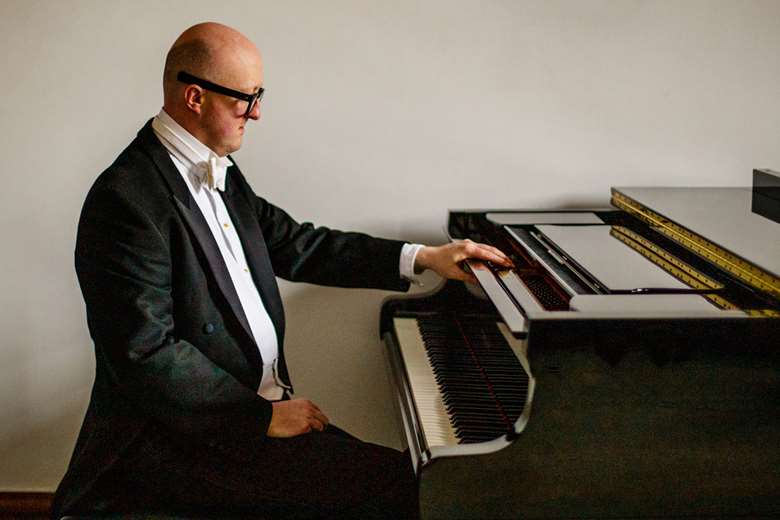Resurrecting Howells's extraordinary piano works
Matthew Schellhorn
Friday, July 10, 2020
Pianist Matthew Schellhorn's new recording of unknown piano works by Herbert Howells – released today – has been a voyage of discovery not unlike that of premiering brand new music

The chance to record an album of over an hour’s worth of beautiful piano repertoire – music that has lain unplayed and unknown by all but a few for 30 years, and in some cases for over a century. This is the stuff of dreams for many musical artists.
Such was the opportunity that fell into my lap and which has occupied me while working towards my latest album of piano music by Herbert Howells. As a pianist who has collaborated with living composers on over 20 commissions, and having given over 100 other world premieres, this challenge initially had a familiar feeling. But as I prepared my musical interpretations, I quickly realised that I was hindered by a huge impediment: despite my many questions on interpretation, and indeed on the musical text itself, Howells would sadly be permanently unavailable for comment.
For this reason, memories of my relationships with other composers came to be very present in my mind, and I found that several previous contemporary music projects fed directly into my preparation for this album. As I was exploring all the available sonorities, my mind alighted on working with Gráinne Mulvey (b1966), whose commission Steel-grey Splinters (2012) was a wholly intuitive and thrilling conception, which demands the finest judgments of finesse to do it justice. Experimenting at the piano in Gráinne’s presence and according to her creative mind gave me an unparalleled experience of oneness with the instrument, which has since opened up new approaches to tone.
I had a similarly profound response, this time to musical architecture, when I took on Ian Wilson’s Stations (2006-7) – a monumental work in 14 movements inspired by the Stations of the Cross, also written for me. The work is designed to be structurally ‘sound’ even if played in several different formats. Yet while Ian’s piece is intended to be carried forward by a ‘dramatic musical framework … unhindered by dogma or imagery’, I found it was the discussions about my personal response to devotional concepts that were indispensable for reaching a consensus on performance details. Ian’s practical response to writing a commission was incredibly focused. We met frequently, over several years. I played a wide range of my repertoire and he would watch, take notes. Afterwards, he sent his musical ideas my way; I would sample them, comment, feed back. It was this ‘ideal’ relationship between composer and pianist that meant that when the score of Stations landed in my lap it felt that every idea and every musical gesture ‘suited’ me perfectly. The unveiling of the piece was like trying on a bespoke suit, with the paradoxical difference that although the outcome fitted me perfectly I did not know in advance what had been on order.
I have found composers can be self-effacing, prepared to take on new ideas and to adapt music to suit the performer. Whether this character trait might have been found in Howells is moot: the music – once it had been deciphered from its manuscripts by editor Jonathan Clinch – was ‘set in stone’. The only ‘room for manoeuvre’, indeed, was in conversation with Jonathan about what particular semantical indications might mean.
That is why, for all my studied consideration of the musical sources, I needed some points of human contact. Meeting those who knew Howells – who had both met him and had spent time with him, who could bring their relationship with him into the present, for my benefit – was key. Importantly, on one occasion I was given the opportunity of hearing a private recording of Howells playing the piano – performing his own and others’ music and also improvising. This experience completely altered my perception of what constitutes a ‘natural’ style, and it fed directly into the development of my response to the composer’s highly idiosyncratic musical markings on dynamics, tempo, voicing and rubato.
One of my incentives for supporting the creation of contemporary music is the chance to meet those who have created what I play. I like to think that in these encounters something going beyond a new piece of music comes into being. Giving first performances of new music, building up friendships with composers: this approach strikes at the heart of music’s potency, and leads to authentic musical creation. It provides opportunities for learning; it augments creative ideas; it promotes collaboration; it strengthens the arts. Helped along by my many happy experiences with living composers, it has felt possible to build a bridge to the past, and to resurrect Howells’s unknown music for piano, bringing them to today’s audiences.
I hope that those who feel drawn to explore this album of extraordinary piano works – spanning as they do most of the 20th century – will discover not only what makes Howells’s writing so compelling but also what is special about hearing and playing new music for the first time.
Listen to Matthew Schellhorn's 'Herbert Howells: Piano Music, Vol 1' (on Naxos) here: https://www.smarturl.it/howellspiano1







